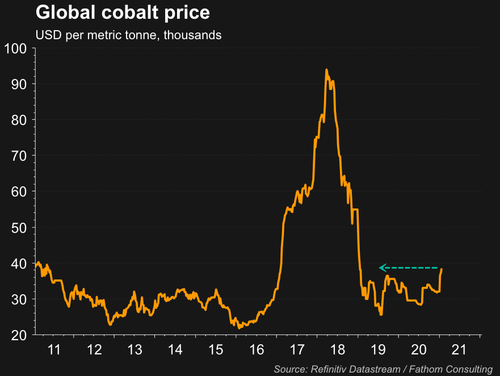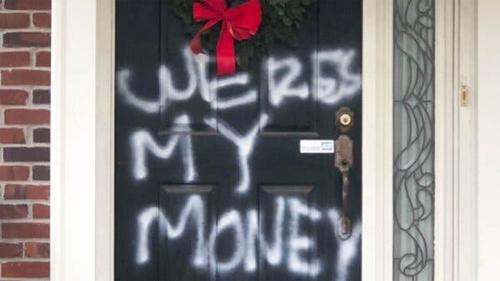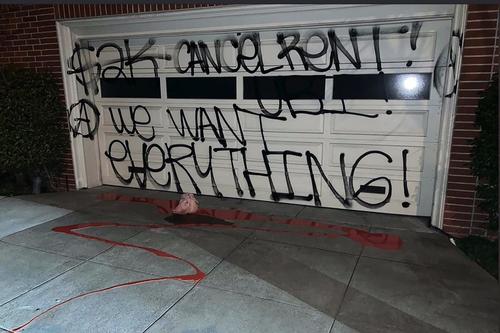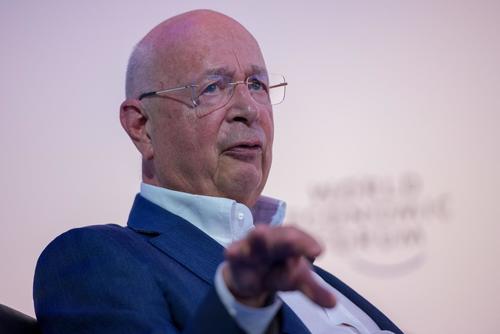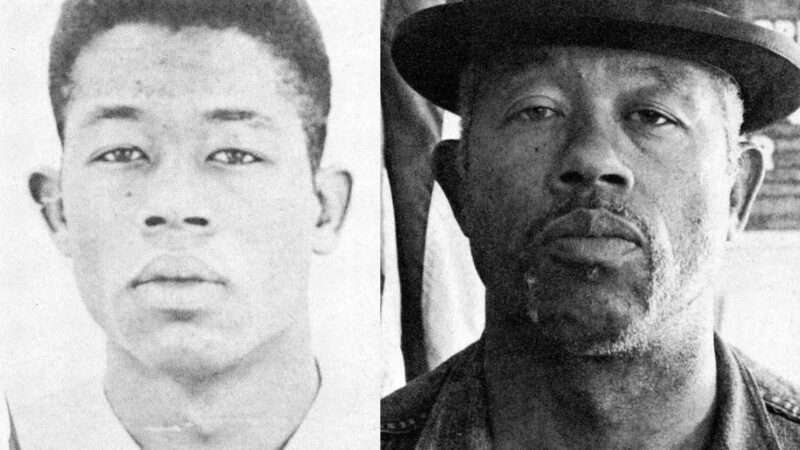From the spread of COVID-19 and the wave of state-imposed closures that followed to the police killings of George Floyd and Breonna Taylor and the unrest that ensued, 2020 was a year in which American institutions flailed and failed. And few failures were bigger or more apparent than those of public-sector unions.
By pushing to keep schools closed even as evidence mounted that in-person classes were relatively low-risk and remote learning was ineffective, teachers unions failed students and parents. By pushing to protect bad cops in the wake of multiple scandals, police unions failed the public they were sworn to protect. And in the process, America got a glimpse of what public-sector unions, regardless of the profession they represent, really do.
Unions that represent government employees seek to maintain an image of themselves as protectors of common institutions that can be relied upon to serve the public interest. But the upheavals of 2020 made clear that the priority for public-sector unions is the opposite: to protect the interests of taxpayer-funded employees, especially when those interests diverge from those of the public they nominally serve.
Yet the politics of public-sector unions have left reforms in limbo. Culturally and politically, police have long been linked with the American right. Teachers, in contrast, are a core constituency of the Democratic Party and some of its loudest supporters and biggest donors.
Public-sector union reform should be a bipartisan issue. Instead, it has stalled or inched along, with each side protect-ing its own.
Teachers vs. Children and Parents
Of all the missteps and public policy failures of 2020, few were more egregious than the failure to reopen public schools for young children. In the early days of the COVID-19 pandemic, schools were shuttered across the nation out of fear that they would become vectors of viral spread. But by mid-summer, evidence from other countries that had reopened their schools, combined with data on how often and how severely children contract the disease, pointed to a clear conclusion: Schools—especially for younger students—were relatively safe. “School districts should prioritize reopening schools full time, especially for grades K-5 and students with special needs,” declared a press release describing a July report from the National Academies of Sciences, Engineering, and Medicine.
Some states, many with Republican governors, chose to bring children back to classrooms in some fashion. But others did not, preferring hastily cobbled-together forms of virtual education. According to one tracker, 62 percent of public schools began the fall semester online only. The dire effects were plain to see. Young children of all demographics fared badly in virtual school, unable to focus effectively on screen-based education from home. The negative effects were most pronounced among poor and minority students, who often lacked consistent access to computers or internet connections and whose chaotic home lives often made learning even more difficult.
A November report from the NWEA, a nonprofit education research organization, examined test scores from more than 4.4 million students and found that kids in third to eighth grade performed 5–10 points worse, on average, than a year prior. Black and Hispanic students, as well as those who attended schools in low-income areas, saw significant declines in reading test scores. The analysis concluded that “the impacts of COVID-19 on achievement for the most vulnerable students may be underestimated.”
The decision to close schools also hurt the careers of working mothers. By September 2020, about 1.1 million adults had dropped out of the U.S. workforce; 865,000 were women, according to the National Women’s Law Center.
There was little good-faith dispute about the merits of in-person instruction, the consequences of closure, and the safety of reopening. Although many prominent public health experts initially were cautious, by fall even they had come around. “The default position should be to try as best as possible, within reason, to keep the children in school, to get them back to school,” said Anthony Fauci, a White House health adviser and the longtime director of the National Institute of Allergy and Infectious Diseases, in November.
The decision to keep so many schools closed was egregious because it was avoidable. It was egregious because its consequences were easy to predict. And it was egregious because it was largely the product of an organized fear campaign by a self-righteous, self-interested political faction that has for years been pursuing its own interests in direct opposition to the betterment of the families and children it is supposed to serve.
Across the country, teachers unions did everything they could to stop reopening. In July, American Federation of Teachers (AFT) President Randi Weingarten threatened “protests,” “grievances or lawsuits,” and even “safety strikes.” The following month in Chicago, Mayor Lori Lightfoot reversed a plan to partially reopen schools two days after the Chicago Teachers Union—which went on strike in 2019—marched against resuming in-person instruction.
The unions’ rhetoric emphasized the question of whether reopening schools was safe. Teachers in Washington, D.C., lined up body bags outside school system offices. Weingarten’s opposition was premised on teacher and student safety. During the summer, the Florida Education Association filed a lawsuit seeking to block the state’s reopening plan on the grounds that it “arbitrarily disregards safety.”
But there was little sound reason to believe that schools were particularly unsafe. Children represented a tiny fraction of recorded COVID-19 cases, even in areas with significant outbreaks, and an even tinier share of deaths from the disease. Research in other countries found that virus transmission among schoolchildren, or between them and staff, was rare.
In New York City, where reopening was especially chaotic, labor representatives negotiated an agreement with Mayor Bill de Blasio to close schools if the city’s COVID-19 test positivity rate reached a seven-day average of more than 3 percent. But that threshold had no scientific justification. De Blasio defended it as a “social contract,” which sounded suspiciously like a way to avoid admitting it was pulled out of thin air.
There was never any attempt to justify the 3 percent trigger with evidence. “We don’t know what the science was behind it,” observes Daniel DiSalvo, a senior fellow at the Manhattan Institute and a professor of political science in the Colin Powell School at the City College of New York. The basic idea, he says, was “let’s make it low.”
Yet in November, as COVID-19 cases once again began to spike in New York, the never-justified standard resulted in the abrupt closure of city schools (a decision that de Blasio later partially reversed). That result made no scientific sense. “If you look at the data, the spread among children and from children is not very big at all,” Fauci noted in November.
Teachers unions were “absolutely central players” in the battle over New York’s schools, says DiSalvo. “The coronavirus has shown a spotlight on the ways in which teachers unions’ interests and kids’ and parents’ interests are not aligned.” A similar misalignment is clear from the behavior of police unions.
Police Jobs vs. Lives
On May 25, Minneapolis police arrested George Floyd, a 46-year-old black man, following a 911 call reporting that he had used a counterfeit $20 bill to buy cigarettes. Less than 20 minutes after police arrived on the scene in response to that call, Floyd was dead.
An officer named Derek Chauvin had kneeled on Floyd’s neck for well over seven minutes, disregarding his repeated complaints that he could not breathe and keeping him pinned for minutes after he fell silent and lost consciousness. Two other officers helped restrain Floyd, while a fourth stood by as Floyd died under Chauvin’s knee. The incident was captured in a shocking cellphone video.
The following day, all four officers were fired. Chauvin was charged with second-degree murder and second-degree manslaughter; his colleagues were charged with aiding and abetting those crimes. Their trial is set to begin in March 2021. In the weeks after Floyd’s death, cities across America saw massive protests against the police brutality that had cost his life.
The four officers’ conduct drew criticism from nearly all quarters. Politicians, pundits, and protesters held up the cops’ brutal indifference as a symbol of bad policing. Chauvin and his fellow officers nonetheless enjoyed a vociferous defense from the local police union.
Bob Kroll, president of the Police Officers Union of Minneapolis, wrote a letter to union members blasting the officers’ dismissal, saying they were “terminated without due process.” There was no mention of whether George Floyd had received due process before he was choked to death on the street. Instead, Kroll complained that the news media were refusing to air Floyd’s “violent criminal history.” He said he was in contact with criminal defense lawyers for the officers and was working “with our labor attorneys to fight for their jobs.”
Chauvin had unceremoniously killed a man accused of using a phony $20 bill. In his last moments, Floyd fought for his life. Kroll and the police union responded by fighting for Chauvin’s job.
More than anything else, police unions exist to defend the employment prerogatives of their members—especially when they perform badly or abuse the public trust. Police may exist to protect the people. But police unions exist to protect the police.
Sometimes, as in Chauvin’s case, this imperative manifests itself in high-profile demonstrations of loyalty to cops whose actions or inactions have proven dangerous or deadly. After Broward County Sheriff’s Deputy Brian Miller was fired for neglect of duty because he hid behind his car while a gunman murdered 17 students at a Parkland, Florida, high school in 2018, the local police union backed a two-year arbitration process that last summer resulted in Miller’s reinstatement with full back pay. The students had lost their lives. Miller had lost his job. But with the union’s support, he got it back, along with his taxpayer-funded annual salary of $138,000.
Sometimes police unions’ protective efforts are less visible. A signature demand of police unions is that their contract negotiations be hidden from public view. In June, following the national outcry over Floyd’s death, Philadelphia Councilmember Katherine Gilmore Richardson sponsored a bill allowing city residents to comment on police contract proposals before they are submitted to the union. The bill, which the city council approved in September, maintained a longtime prohibition of public input on final approval of contracts. “This legislation seeks to mandate public transparency and accountability in a process that has been shrouded in secrecy for too long,” Richardson said.
In October, the local Fraternal Order of Police (FOP) responded with a lawsuit seeking to block the reform. “We had to do something in order to put an end to what they’re doing, demonizing police officers in the city of Philadelphia,” FOP President John McNesby argued at a press conference. Letting the public see and comment on the contract process was akin to “demonizing police officers.” It had to be stopped.
When those contracts do become public, it’s clear why police unions want them shrouded in secrecy. They routinely include provisions that single out police for special treatment, giving them legal protections that no ordinary citizen could expect, much less demand as part of a compensation package.
Those protections became a point of controversy in Louisville, Kentucky, following the March 13, 2020, police shooting of Breonna Taylor, a 26-year-old black woman. City police used a battering ram to knock down Taylor’s door in the middle of the night while serving a search warrant based on the unsubstantiated suspicion that she was participating in a former boyfriend’s drug trafficking operation.
Taylor and her current boyfriend, Kenneth Walker, were in bed at the time. After hearing the tumult at the door, Walker grabbed a handgun and fired once at the intruders, striking an officer in the leg. Walker later said he believed he was defending himself and Taylor against dangerous criminals.
Three officers responded to the shot fired by Walker with a hail of 32 bullets, killing Taylor. The police found no drugs or any other evidence that Taylor was involved in criminal activity.
After Taylor’s death, Louisville’s interim police chief, Robert Schroeder, concluded that Detective Brett Hankison, one of the officers involved in the raid, “displayed an extreme indifference to the value of human life” when he “wantonly and blindly fired 10 rounds” into Taylor’s apartment. Noting that some of those bullets entered a neighboring apartment, Schroeder said Hankison’s recklessness posed a “substantial danger of death and serious injury” to the public.
“I find your conduct a shock to the conscience,” Schroeder wrote in a letter announcing his intent to terminate Hankinson’s employment. “I am alarmed and stunned you used deadly force in this fashion.”
But before he could fire Hankison, Schroeder had to go through the police union. The termination procedures in the police contract guaranteed a “pre-termination hearing” with legal counsel present, a right to make a case for less severe punishment, and a right to appeal to the Police Merit Board, which could overturn the chief’s decision if it decided termination was excessive.
Hankison, who in September was charged with three counts of wanton endangerment, was fired in June 2020. But in stark contrast with the unusually rapid dismissal of the officers involved in Floyd’s killing, it took three months—and a loud public outcry linking Taylor’s death to Floyd’s—to get Hankison off the force. He has filed an appeal to the merit board to be heard following the conclusion of the criminal case.
In the months after Taylor’s killing, meanwhile, the city of Louisville began renegotiating its contract with the police department. Those negotiations provoked an intense debate about reforms intended to mitigate police abuse. The main obstacle? The local police union.
In November, the city council approved a new contract that included additional benefits and multiple protections for police, among them a provision allowing some disciplinary records to be destroyed after specified lengths of time. “What is largely missing from it are just fundamental accountability requirements that allow the department to sufficiently discipline officers who commit misconduct,” Brandon Coan, the most outspoken critic of the police union on the council, told the Louisville Courier-Journal.
Among the provisions the union defended most aggressively: a ban on officer layoffs.
Public-Sector Privilege
More than anything else, what connects police and teachers unions is the determination to guarantee their members’ jobs.
In theory, this emphasis on employment protection represents a contractual safeguard against politically motivated firings, unfair judgments, personal vendettas, or unexpected budget cuts. Public-sector workers, whose salaries are paid with tax dollars, face a different kind of scrutiny than many of their private peers. These protections ostensibly represent an attempt to guarantee fairness in the face of unique pressure.
In practice, however, public-sector unions exert a disproportionate amount of effort defending their worst members—not just the ones whose performance is subpar but the ones who are actively malign. Unions show their unwavering dedication to protecting their members’ jobs by making sure it’s very difficult—sometimes nearly impossible—to fire a union member, no matter what that person has done. It’s not the easy cases where the unions demonstrate the strength of their commitment; it’s the hard ones.
For police, that means violent and otherwise abusive officers, those whose actions have harmed people or cost them their lives. For teachers, it means educators who are worse than incompetent—those who have been accused of abuse, or worse.
In a 2009 story for The New Yorker, journalist Steven Brill explored New York City’s “rubber rooms”—holding pens for hundreds of teachers who had been taken off the job pending disciplinary action or review but were still receiving their full salaries. A school principal quoted in the story said AFT’s Weingarten would “protect a dead body in the classroom.” It didn’t matter what the teachers had done. It mattered that they kept their paychecks.
The following year, the teachers union agreed to a deal that was supposed to eliminate what were euphemistically called “reassignment centers.” But six years later, the New York Post found they were still in use, still holding hundreds of teachers, often for years at a time, who were earning full salaries on the public’s dime to nap and play board games. “They’re just letting me sit here,” one unnamed reassigned teacher told the Post. He had been accused of physically abusing students, which he denied. He said he made about $70,000 a year.
The determination to protect the jobs of poor performers can even trump the desire to increase compensation. More than a decade ago, when Michelle Rhee first became chancellor of the Washington, D.C., school system, she proposed a system in which teachers could choose to weaken seniority and tenure protections in exchange for substantially increased salaries. Essentially, her plan was to reward high performers while making it easier to part ways with those who didn’t pass muster. A union-commissioned poll found that teachers opposed the proposal by a 3–1 ratio. Months later, when Rhee pushed forward with firing teachers found to be ineffective, The New York Times reported that the president of the Washington Teachers’ Union “responded by promising that the union would help teachers use all procedures available to protect their jobs.”
If jobs, regardless of performance, are the first thing unions seek to protect, benefits are the second. Public-sector unions repeatedly have fought for hefty benefits packages, including retirement and health plans, that add considerably to their compensation. And no benefit is more important to public-sector unions than pensions.
Long before the economic meltdown of 2020, public pensions were a huge drag on state budgets. At the beginning of the year, states already carried $1.2 trillion in pension debt.
At times, this enormous fiscal obligation overwhelmed other public priorities—including education and policing. The share of state education funding devoted to pensions doubled between 2001 and 2018, from 7.5 percent to 14.4 percent, according to an April 2020 report from the nonprofit Equable, representing a “hidden cut” to education funding. Those cuts, the report said, tended to affect poorer school districts the most.
Public-sector pensions are often legally protected in ways that make reforms difficult. The details vary by state, but the police retirement plan in Austin, Texas, offers a useful example.
In 2018, the Austin Police Retirement System had about $582 million in liabilities, an increase of more than $175 million from just a year earlier. As a result of this fiscal burden, Moody’s Investors Service downgraded the city’s bond rating, which was apt to increase the city’s borrowing costs. Over the summer, the city council responded by approving a cut of more than $150 million from the police budget. But the city didn’t touch the pension fund, because in Texas it’s constitutionally protected. And even after the budget cuts, pension obligations were projected to continue rising. Effectively, the city chopped spending on day-to-day policing to help offset the cost of continuing to pay officers who were long off the job.
Unthinkable and Intolerable
Public-sector unions have always been controversial. In 1937, President Franklin Roosevelt warned that “the process of collective bargaining, as usually understood, cannot be transplanted into the public service.” Although he was a staunch supporter of private-sector unionism, Roosevelt believed the costs were different in public-sector work. A “strike of public employees,” he said, “manifests nothing less than an intent on their part to obstruct the operations of government until their demands are satisfied. Such action looking toward the paralysis of government by those who have sworn to support it is unthinkable and intolerable.”
At the close of 2020, Roosevelt’s warnings felt especially prophetic. While teachers did not technically go on strike, they explicitly threatened to do so, and in many cities and states educators, backed by unions, successfully argued their way into remote-teaching arrangements that did deep damage to the nation’s youth. In November, teachers in the Washington, D.C., school system staged a “sick-out” that caused city officials to cancel reopening plans for especially needy elementary school students. Because of union opposition, Chancellor Lewis D. Ferebee said, the system simply wouldn’t have enough teachers available to staff the schools.
Police did not officially walk off the job either. But following the Floyd killing, there were multiple reports of “blue flu,” which amounts to a soft strike in which officers call in sick.
In Atlanta, 170 officers called in sick in June after two officers were charged in a shooting. In July, the Los Angeles Times reported that an unsigned letter circulating among officers was encouraging them to “send a clear message” by calling in sick in response to nationwide protests against police abuse. The letter warned that a laundry list of union priorities were threatened. “They succeeded in defunding the police; what do you think is next? Our pay? Our benefits? Our pensions?” the letter said. “You’re God Damn right all those things are in jeopardy now.” Last summer, murders spiked in cities across the country. Although multiple factors were involved, including agitation from the pandemic and associated lockdowns, there was enough speculation that police had intentionally reduced their presence that The Christian Science Monitor published a piece noting the crime spike and wondering if “police, in at least some cases, [had] partially ceded the streets.”
Public opinion also seemed to shift, with clear majorities supporting reform of police unions. According to an August 2020 Cato Institute/YouGov poll, 84 percent of Americans, including majorities of both Democrats and Republicans, opposed police union contracts that require officer misconduct records to be erased after a specified period of time. The poll also found that 62 percent of respondents believed police unions should be prohibited from collectively bargaining over methods used to hold officers accountable for misconduct.
The split on the latter question was more partisan, with Democrats substantially more likely to oppose such contract provisions. A Gallup poll conducted during the summer likewise found that while 89 percent of Democrats said major changes were needed to American policing, just 14 percent of Republicans agreed.
Regarding teachers unions, an August poll from Rasmussen found that 39 percent of respondents thought it was a good thing that most teachers belong to unions, down from 45 percent in 2019. An Education Next survey published in August found that majorities of both Republicans and Democrats supported school choice policies such as giving low-income parents tax credits to pay for private school tuition. But even in the midst of the most visible public education crisis in decades, teachers and local schools remained quite popular, with Democrats substantially more likely to support increased funding for public education.
Teachers unions remain closely linked with the Democratic Party. “Since 1990, the AFT and the [National Education Association] have regularly been among the top 10 contributors to federal electoral campaigns,” according to another Education Next report. It noted that Democrats receive “the vast majority of [the two unions’] hard-money campaign contributions as well as in-kind contributions for get-out-the-vote operations.”
Those partisan differences could help explain why what might have been a moment of bipartisan reflection instead became a moment of retreat to predictable political corners.
Yes, President Donald Trump signed an executive order on police reform in June, just before Sen. Tim Scott (R–S.C.) unveiled a bill that would encourage local departments to ban chokeholds and modestly increase police accountability by creating a national database of misconduct.
And yes, San Francisco Mayor London Breed issued a strongly worded statement slamming teachers for dithering about renaming schools while most of them remained closed. “While many private schools are open today, our public schools have still not yet made a firm plan to open,” she wrote in October. “Parents are frustrated and looking for answers. The achievement gap is widening as our public schools [sic] kids are falling further behind every single day….In the midst of this once in a century challenge, to hear that the District is focusing energy and resources on renaming schools—schools that they haven’t even opened—is offensive.”
But these were half measures at best. Both Trump’s order and Scott’s bill represented minimal efforts, more symbolic than meaningful. Notably, most Republicans remained firmly opposed to making any changes to qualified immunity, a legal doctrine that shields government employees from civil liability even for egregious misconduct. Trump spent the summer tweeting constantly in support of police. In one case, after a Buffalo, New York, police officer was caught on camera pushing a 75-year-old protester to the ground, Trump speculated in a tweet that the elderly gentleman might have been an “ANTIFA provocateur” who faked a hard fall as part of a “setup.”
The first bullet-pointed item in Joe Biden’s education plan was not a program to help students or to reopen closed schools. It was “support our educators by giving them the pay and the dignity they deserve.” Biden’s plan was to pay and praise teachers more. In early December, after he named Connecticut Chief of Schools Miguel A. Cardona secretary of education, Weingarten, the head of the American Federation of Teachers, pointed to Cardona’s former AFT membership and praised his “deep respect for educators and their unions.” Biden’s preferred choice for health and human services secretary, Rhode Island Gov. Gina Raimondo, was initially blocked by unions “because of her record on pension changes,” according to The New York Times. Biden later tapped her for Commerce Secretary, but her work on Rhode Island’s public pension demonstrates the difficulty of even modest reform.
As the state’s treasurer in the early 2010s, Raimondo, a Rhodes scholar who studied economics at Harvard, spearheaded a series of changes to the state’s pension program, cutting cost-of-living adjustments for retirees and moving current workers to a hybrid pension/savings plan. “A big part of the reason we were not having enough money for public buses and playgrounds and libraries and after-school sports is because the pension liability was gobbling up an increasingly large percent of the budget,” she told Roll Call in 2016.
The state’s finances improved, but in 2016 its public pensions were still underfunded, covering 57 percent of total obligations for teachers and 59 percent for other public workers (up from 49 percent in 2010). A coalition of public employees neverthe-less sued to block Raimondo’s overhaul, eventually settling out of court. By 2019, the share of obligations covered by the state’s pension funds had shrunk to 55 percent for teachers and 53 percent for other employees.
The lesson for public-sector reformers is clear: Even relatively small changes are likely to provoke significant political pushback.
Institutional Failure
What do schools and police represent? What is their role in society? They are publicly funded programs, and they are employers. But they are also institutions that represent broad-based public values: the care and education of children; public safety and order. Yet police and teachers unions have consistently treated these institutions as employment fiefdoms—as entitlements for a class of privileged workers—rather than public trusts. They have behaved in ways contrary to the values those institutions are intended to uphold.
In the process, they have failed the public they are supposed to serve. In Roosevelt’s words, they have contributed to “the paralysis of government.”
Yet politically, that paralysis turned out to be neither unthinkable nor intolerable. Instead, it was largely business as usual, with public-sector unions proceeding as they always have and, without reform, always will. The multiple calamities of 2020 did not cause public-sector unions to fail. They showed us all the ways they already had.

from Latest – Reason.com https://ift.tt/3ocOEI0
via IFTTT
